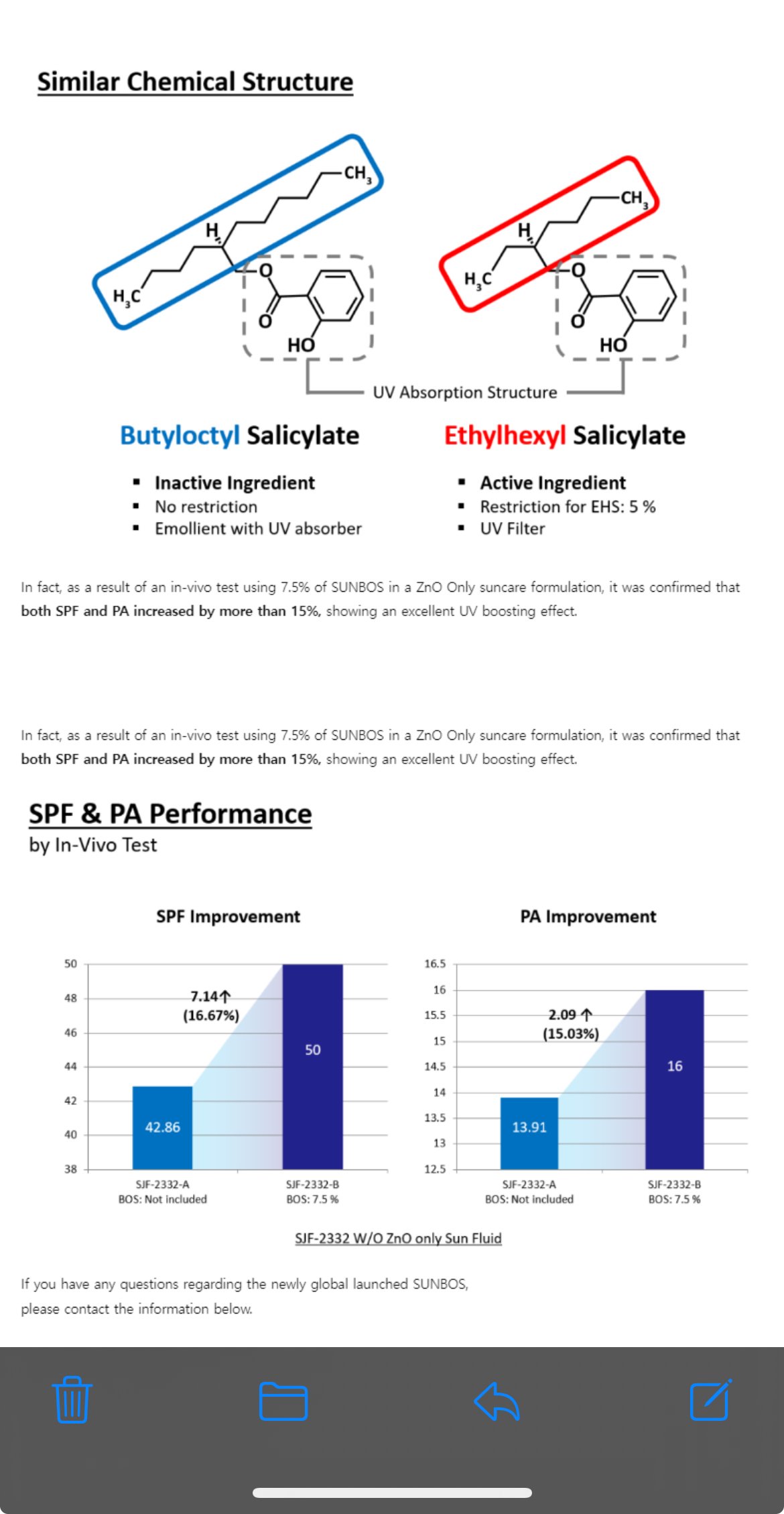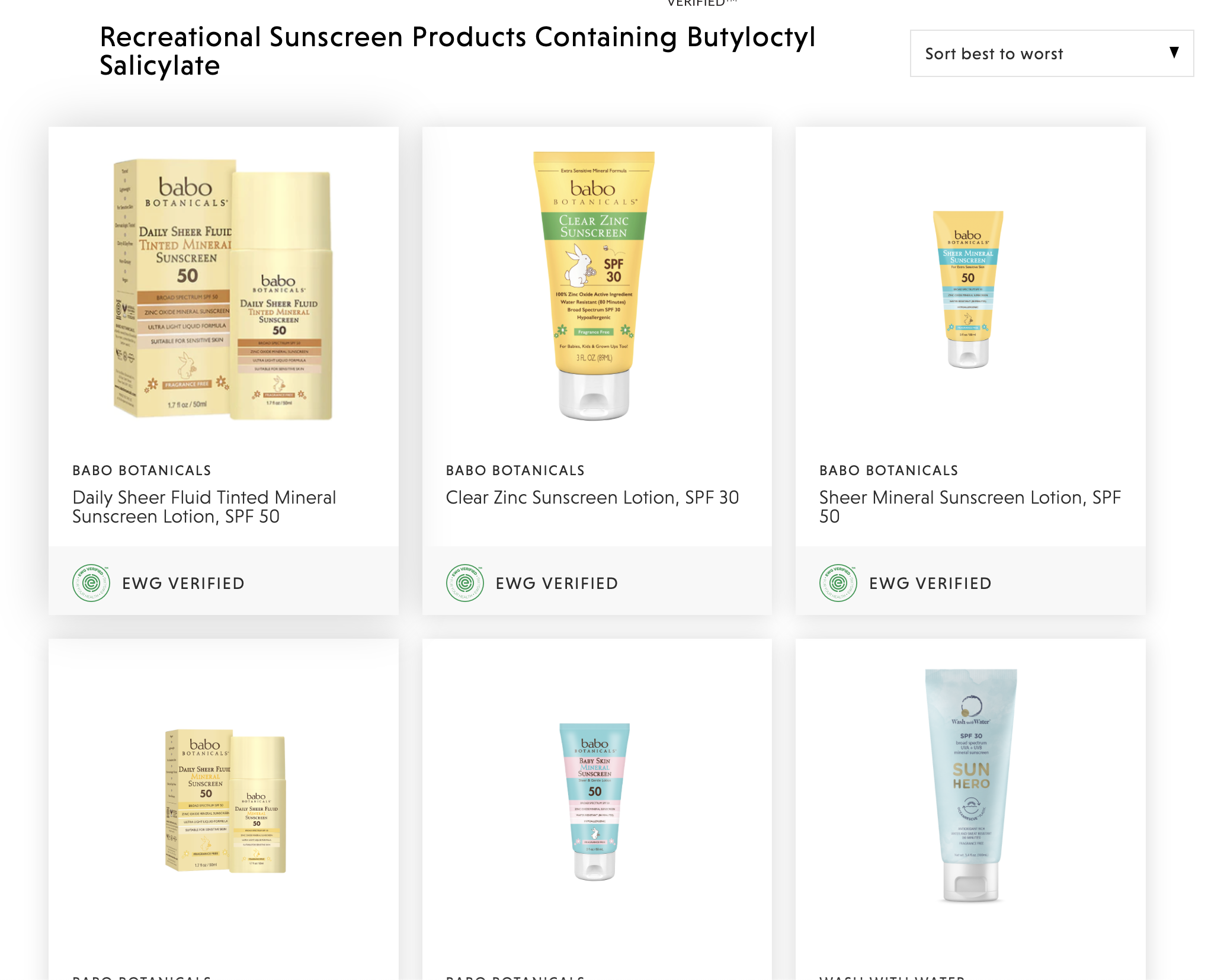The debate is over: Butyloctyl salicylate is octisalate and cannot be used in an 'all-mineral' sunscreen.
Safety Issues with Butyloctyl Salicylate in ‘All-Mineral’ Sunscreens:
This will be the sunscreen debate of 2024. Can a sunscreen be labelled as ‘all-mineral’ if it contains the ingredient butyloctyl salicylate and/or tridecyl salicylate in its inactive ingredients? This is the question that we have been asking and answering with a resounding “NO” for years. We’ve always maintained that these two salicylate ingredients do not belong in sunscreens as they can manipulate the SPF and PA (in-vivo UVA) ratings of a formula. We have argued that they have clear safety issues in their almost ubiquitous use in sunscreens, especially for pregnant women and small children. We have also argued they are basically modified versions of the ‘chemical’ UV filter octisalate and thus cannot by definition be included in a sunscreen formula that also claims to be ‘all-mineral’. However, as one of the few brands to openly criticize its use, our arguments have been dismissed by other brands, founders and industry experts. We’ve heard other brand founders claim, ‘it has a safety rating of 1 (i.e. excellent) on the EWG’. ‘It’s basically just salicylic acid’. ‘It merely disperses the zinc oxide in the formula’. However, we are here to say that we have the definitive proof that butyloctyl salicylate was created intentionally by the sunscreen industry to avoid having octislate on the ingredient listing as a declared active. It is used by formulators to disguise the presence of a ‘chemical’ UV filter in mineral sunscreen formulas. It is also used to reduce the amount of inorganic mineral filters needed to get a desired labelled SPF and PPD rating.
The Definitive Proof: Butyloctyl Salicylate is Octisalate
For years, we have argued all of the above but it was challenging to be one of the few brands to openly discuss it. We also had to read in-between the lines of what raw material suppliers would claim for the two SPF boosters butyloctyl salicylate and tridecyl salicylate. Most North American suppliers of the ingredients would claim that these were potent anti-inflammatories that worked to boost both the SPF and PPD ratings by reducing redness (which is still very problematic). They also claimed to work by improving the efficiency of other filters by way of enhancing their dispersions. It remained challenging though to know whether these ingredients actually attenuated (protected against) UV light and how close they were to the ‘chemical’ UV filter octisalate (chemical name ethylhexyl salicylate). No raw material supplier would openly say that they were minimally modified to get around FDA labelling restrictions and consumers desires for mineral only formulas. Until…
Sunjin is a major Korean ingredient supplier and clearly did not have the same reluctance in openly declaring that butyloctyl salicylate is octisalate just with some very minor modifications. They are at the forefront of innovative UV filters and skincare ingredients. You can imagine our surprise when our R&D team received their email explicitly disclosing what we’ve always suspected but had a hard time proving. We’ve copied and pasted their exact email so you can see for yourself and then we’ll summarize their claims.
2. What Sunjin Says about Butyloctyl Salicylate as a UV Absorber and how to use in mineral sunscreens
Sunjin is being pretty clear in its claims. They clearly show that butyloctyl salicylate is a very minimally modified and the part of the chemical structure that does UV absorption is the same. They advise formulators to use as there are no ingredient restrictions in terms of national regulations like with octisalate (otherwise known as ethylhexyl salicylate for its chemical name). It can therefore be used in mineral sunscreens without consumers noticing. They showed how in their own testing, it increased the SPF and the PA (in-vivo UVA) for their zinc oxide ‘only’ formula. There are a ton of implications for consumers and the sunscreen industry as a whole, so let’s break it down.
3. Implications of the use of Butyloctyl salicylate in Mineral Sunscreens
The most obvious implication is that formulators and brands can no longer claim that they did know what butyloctyl salicylate truly is. Butyloctyl salicylate is a ‘chemical’ UV filter that due to a regulatory loophole can hide in the inactive without any regulatory oversight or restriction. We would argue that ingredient safety sites like the EWG also has to take note and review their ingredient listing, sunscreen database, EWG verified standards and all recommendations that they make for their top ‘all-mineral’ sunscreen picks. As per their site as of December 2023, they have 388 recreational sunscreen products listed that contain this ingredient, 285 daily use sunscreen products, 85 CC creams and 64 baby sunscreen products that contain this ingredient. When you click through the 388 recreational sunscreens linked, the first 6 products are ‘all-mineral’ sunscreens containing this ingredient that received the EWG verified mark.
4. Butyloctyl salicylate safety issues
There are two very clear safety issues with the pervasive use of butyloctyl salicylate in sunscreen formulations.
The first issue relates to the practice, as the Sunjin email encourages, to reduce your quantity of inorganic UV filters in your sunscreen formula and replacing with butyloctyl salicylate in the inactive. The thinking is that using high concentrations of zinc oxide and to a lesser extent titanium dioxide in your sunscreen formula is expensive, challenging and can make the formula whitening and thick. Hopefully if you have shopped our mineral sunscreens then you know it is possible to use high concentrations (i.e. 25% of zinc oxide) and still have a beautiful and elegant daily sunscreen formula. Our company prides itself on making highly protective while highly aesthetic daily facial all-mineral sunscreens.
Let’s also be clear- It is dangerous to reduce the amount of zinc oxide in your formula and replace it with butyoctyl salicylate. You may maintain your claimed SPF value, as butyloctyl salicylate protects against UVB light just like octisalate. However, it does not absorb UVA light. This means that you are reducing the sunscreens protection against UVA and making your sunscreen dangerously UVB biased. You are leaving your customers vulnerable to photo damage, pigmentation and many forms of skin cancer.
You may have noticed the Sunjin email does claim that it improves the PA rating of your sunscreen. This is strong evidence that the PA or PPD test used to test for your UVA protection is flawed and can be skewed by using anti-inflammatory ingredients. The anti-inflammatory properties of butyloctyl salicylate are most likely skewing the test results by reducing skin redness and pigmentation and artificially inflating the PA results. We have always preferred the alternative in-vitro testing method for UVA for as it can not be skewed in this way.
In terms of whether we should consider tridecyl salicylate to have the same issues, the answer is most likely yes. We do not have the same irrefutable evidence as we now have for butyloctyl salicylate. However, anyone with a knowledge of ingredient chemistry could easily argue that the chemical structures of both ingredients are also exceptionally close and are likely to have the same effects.
Conclusions: True Transparency in All-Mineral Sunscreen Formulations Means No More Butyloctyl Salicylate
The absolute blunt truth is: you cannot use Butlyoctyl Salicylate in a sunscreen and claim it’s all mineral. It’s misbranding in its clearest forms and misleads customers. We would argue that butyloctyl salicylate should not be used to reduce the concentration of UVA absorbing UV filters like zinc oxide as it’s dangerous for users and creates UVB biased sunscreens. We also think the industry needs to take a serious look at whether butyloctyl salicylate and all salicylate based UV filters (including octisalate) is safe for pregnant women and young children. We actually applaud Sunjin Chemical for being honest about what butyloctyl salicylate truly is, it’s now up to all those in our industry to decide how to move forward. Industry insiders can no longer say that they didn’t know.
We’re proud to formulate butyloctyl salicylate free and tridecyl salicylate free all-mineral sunscreens. We maximize their UVA protection by using the highest amount of zinc oxide while keeping them beautiful enough to wear every single day. At The Sunscreen Company, we love to offer the best in continuing skincare and sunscreen education, so make sure to follow us on IG @thesunscreencompany.





